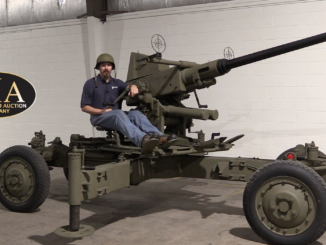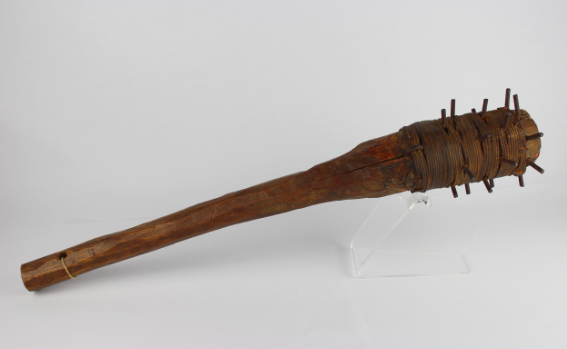Lot 1059 in the September 2020 RIA Premier auction.
The Chichester Rifle Company (actually of Jersey City, NJ) was one of many small firms that sold branded guns made by the Hopkins & Allen company. In particular, Chichetser sold a “pocket rifle” which was really an XL No. 5 revolver fitted with a long barrel and detachable shoulder stock. These are in period catalogs that survive, and appear to have been made form about 1880 until 1890. In addition, Chichester appears to have also made a small number of “pocket shotguns” by fitting 28 gauge smoothbore barrels to the .38 rimfire (and centerfire) XL No. 5 frames. Both the rifles and shotguns were fitted with an interest small shield, which was intended to accommodate the fact that the user’s eye would be much closer to the gun than a revolver held at arms length. The shield protected the users from escaping gas or debris, and also functioned as a sort of aperture sight.
Special thanks to Cornell Publications and Mike Carrick of Arms Heritage Magazine for help researching this unusual piece!




It appears that .38RF was a
bullet diameter of 0.375in.,
and 28 gauge is a
bore diameter of 0.550in.
If true, how do we imagine that this rattle-tube setup functioned?
Did .38RF shot cartridges exist?
And if I were for some reason seeking a revolving long arm, I’d be a lot more interested in a cylinder gap shield than a cylinder back shield.
“Did .38RF shot cartridges exist?”
Yes, municion has photo of Cartucho de perdigones see
http://old.municion.org/38Short/38Long.htm
it states it was made no earlier than 1872 and no later than 1891.
These small caliber H and A shotguns are great. As I said I have a falling block medium sized model model in .38xl cal and I have seen one in .44 xl but a revolver version is great Here in France there are still hundreds of 9mm flobert shotguns sold every year and in Italy they even use a beefed up centre fire version that uses lath turned reloadable shells for black bird hunting while about 30 years ago there was a clip fed semiauto gun based on a 22 by marishino(spelling)
We have a 9 mm cane gun that predates 1900 and was used to scare black birds out of the cherry trees by my wifes grandmere and I believe some shoulder stocked revolver versions were made by manuarme
a good french website which mentions hunting with the 9mm flobert is Des grives aux merles
Pocket Triceratops revolver ?
Is there a British revolver called the Leicester? Which is spelled Leicester, but because it is British it is pronounced Lester.
Those of us from New England have no problem correctly pronouncing the names of English towns, cities and so forth.
Meanwhile in new Hampshire, the town of Chichester is pronounced “CHY-chester”.
As to the previous poster Frank de Haas says that the single shot rifles used a 38 long colt shot cartrige so i imagine the revolvers used the same
Talk about a hot dog down a hallway situation. I’ve heard a slight overbore can improve patterning (curiously, only above freezing for some reason), but this is expecting a lot out of a 19th Century shot cup.
Any NFA issues, or are the bbls 18″?
Antique so not NFA.
Also rimfire, using an obsolete cartridge that is no longer manufactured. Even the 1960s GyroJet counts as a curio or relic today, because nobody has made GyroJet ammunition for fifty years.
cheers
eon
I’ve been shooting since 1961, I’ve never had a pierced primer, but I have had blowouts on .22 rimfire cartridges. Possibly why the CF has no blast shield?
It does make me want to have a Nagant gas seal revolver fitted with a 16″ barrel and detachable stock though.
What do you call the bird that lays your breakfast eggs?
Chii – ken?
I first went to the UK in 1974 Their were no other COLONIALS (their words) and only one working class brit in our class of archaeology students. If you wanted to fit in and make friends (girls) you soon learned to not swear and to say tomatoe not tomatoe
Things have changed now but your accent is still important in the UK
Hopkins & Allen XL: The “suicide special”–five shot, single-action, .32RF revolver produced in huge numbers, and very cheap.
“Unique” used twice in the post with a qualifier. Sorry Ian, pet grammar peeve on my part. Unique is absolute. Nothing is “pretty unique”. Better to go with “unusual”. This H&A fits that description. Highly unusual, and from all I can tell, highly unusable as well.